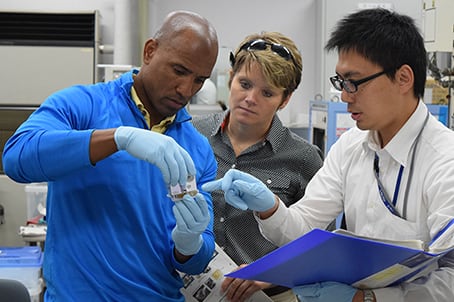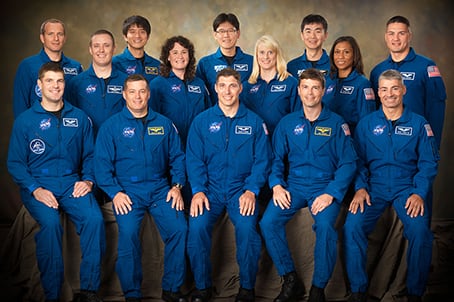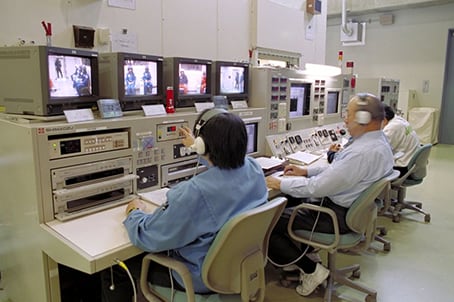Astronauts advance space development by traveling between two worlds, space and earth
In 1992, MOHRI Mamoru became the first Japanese astronaut to ride the space shuttle, and since his spaceflight, a total of 11 Japanese astronauts from JAXA (formerly known as NASDA) have traveled to space and carried out a variety of missions. During this period, the ISS was completed, and the Japanese Experiment Module "Kibo," its largest laboratory module, became a stage for activities by Japanese astronauts. The space shuttle era continued for a long time, but after it ended, the means of traveling to space changed completely. In addition to Russian Soyuz spacecraft, American civilian spacecraft have also recently been active. Every day, astronauts are engaged in various tasks, both in space and on earth, to push the steadily-advancing cutting edge of space development.
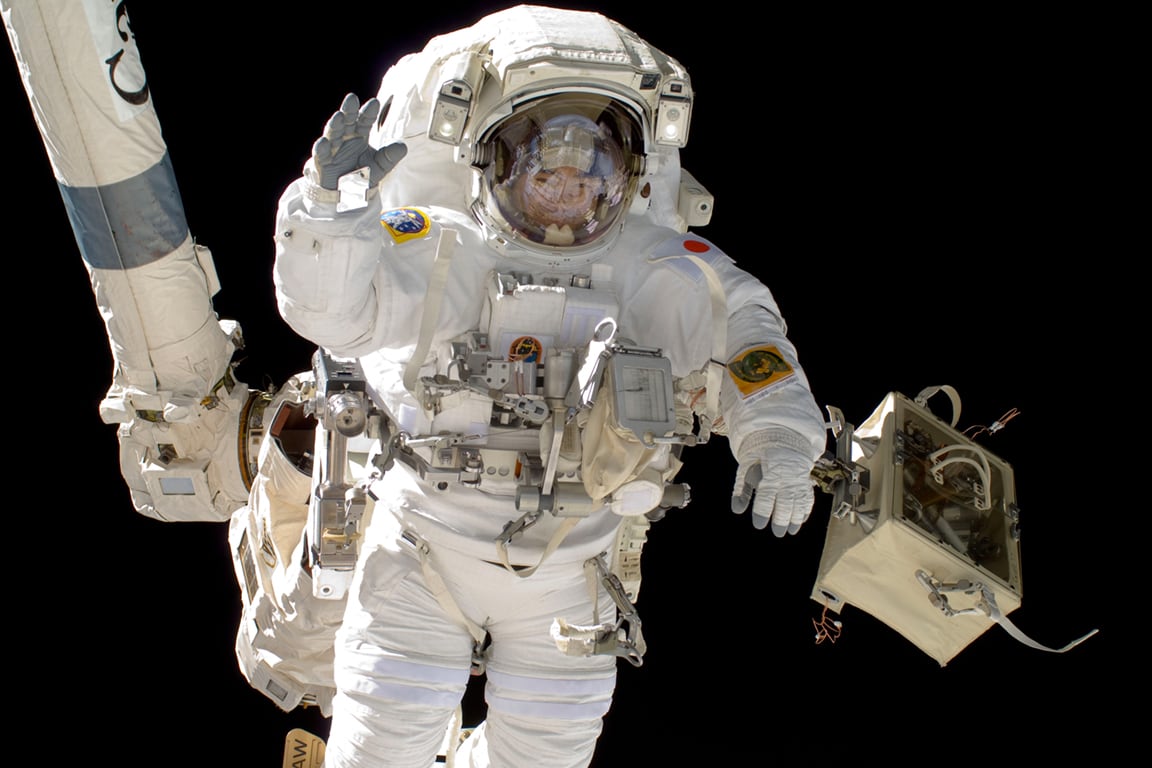
Shifting from the current model of ISS missions to the next generation.
Work in space continues to evolve.
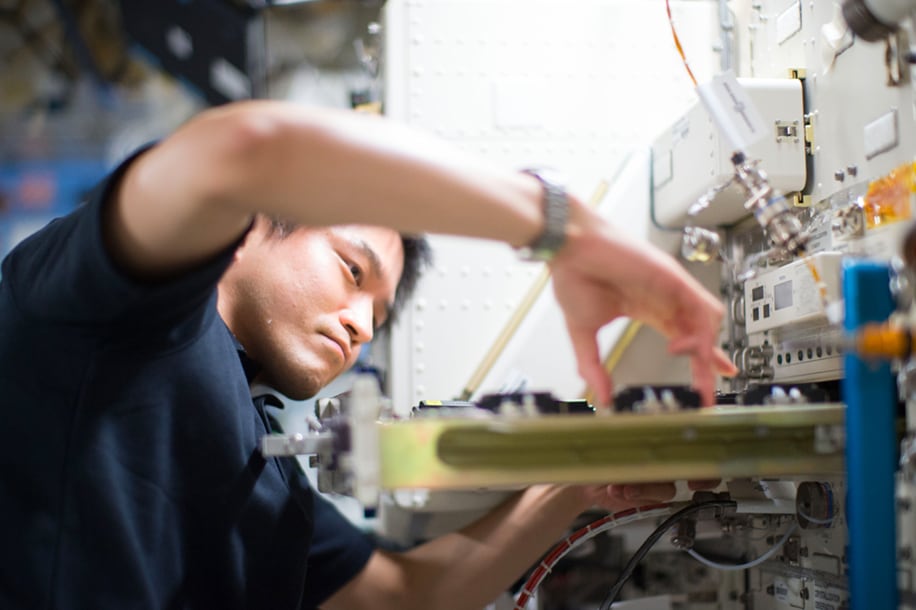
Missions by today's astronauts focus on experiments and operations during ISS stays ranging from a few months to half a year. These experiments utilize the unique characteristics of the space environment, such as microgravity and high vacuum, and cover a diverse array of research topics, from physics to medicine and biology. Operations include system management, repair, and maintenance for the ISS and the Kibo, as well as work involving operation of the robotic arm, and extravehicular activities wearing a spacesuit. Electric power and other limited resources must be shared with astronauts from other countries, so each mission is carried out according to a minute-by-minute schedule in coordination with control rooms on earth.
Manned space activities are expected to extend, before long, to the moon and other planets, and the work done by astronauts is likely to change accordingly. Around the fall of 2021, JAXA will begin recruiting candidates to become new astronauts. Expectations are high for this new generation of astronauts.
Even for those chosen,
it's a long road to become an astronaut
Even if you are chosen as an astronaut candidate, that doesn't mean you will soon be an astronaut. First, for about two years, you have to undergo basic training to acquire the fundamental knowledge and skills needed as an astronaut, and then be certified as an ISS astronaut. Even if you become a candidate, you still can't call yourself an astronaut.
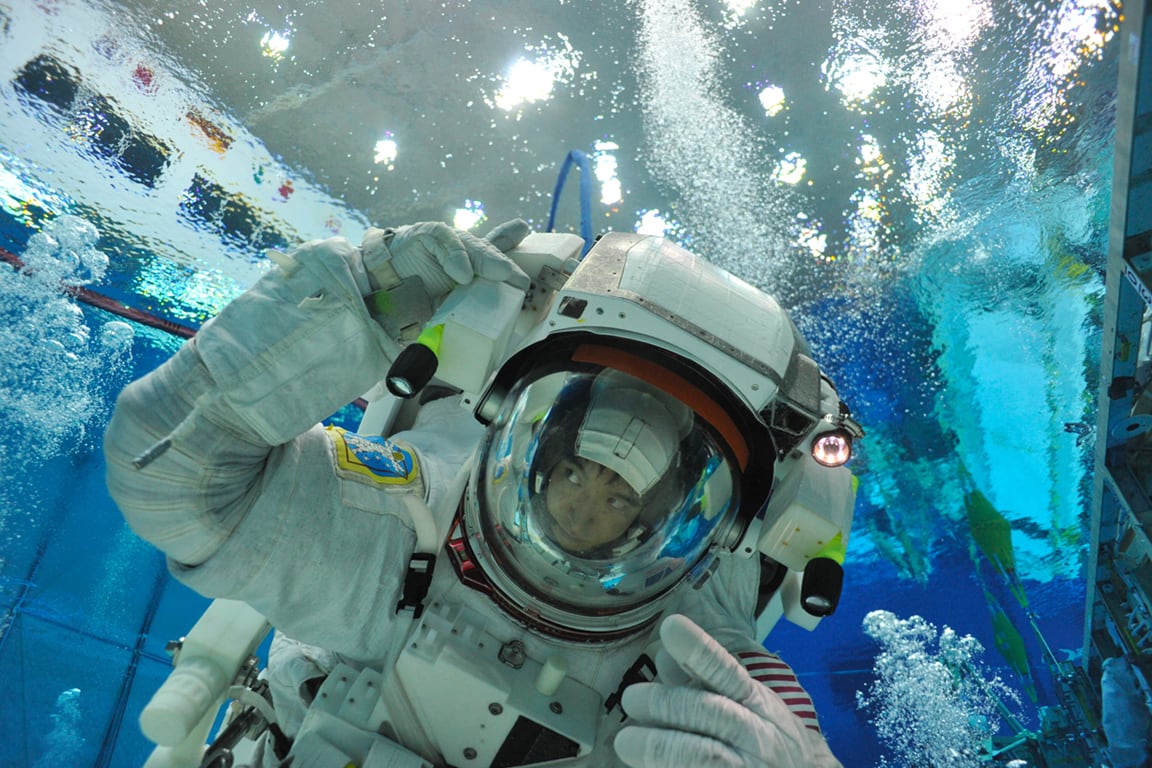
JAXA Digital Archives
Now you're officially an astronaut!
However, the days of training still continue

Even if you make it through and are certified as an astronaut, you still don't have a clear path to space. You must continue training to maintain and improve your skills and physical strength, and wait to be assigned to an onboard mission.
When you've been assigned to an onboard mission, you first have to undergo mission-specific training for one to two years. Then it's time for the actual flight.
Training is conducted in the partner countries and regions of the ISS (the USA, Russia, Europe, Canada, and Japan), and the skills needed to carry out missions, such as robotic arm operation and extravehicular activities, are painstakingly fine-tuned. In particular, training for the operation and use of Kibo is carried out at the JAXA Tsukuba Space Center. Daily training is also essential for developing physical strength.
At the ISS, experiments in a wide range of fields must be carried out without a hitch, and those experiments each involve a high degree of specialization. Careful study beforehand is crucial, including actually meeting and listening to the researchers who have proposed experiments.
There's nothing in particular that they must not do on a regular basis, but when flight time approaches, dangerous activities are forbidden to ensure that astronauts do not get injured and become incapable of carrying out their mission. Specifically, astronauts cannot engage in automobile, boat or other racing, skiing, skydiving, or firefighting operations from one year before the flight. Also, astronauts are not allowed to participate in sports such as baseball, softball, and basketball from eight months before the flight.
Astronauts are busy on earth too,
doing various types of development, planning, and support.
Even if you earn the title of astronaut, you'll spend only a limited amount of time working in space. Judging from past cases, going to space for a mission happens in most cases about once in 5–10 years. As a result, astronauts do a lot of work on earth. They carry out tasks based on their fields of expertise—providing support from earth for astronauts in space, developing experimental equipment used in the ISS, and formulating operational plans. In some cases, astronauts may undergo long-term training for a specific mission. Communicating space activities and experiences to the public is another important aspect of the job. Astronauts participate in lectures, events and educational programs, and respond to the media. Even on earth, being an astronaut is a busy job.
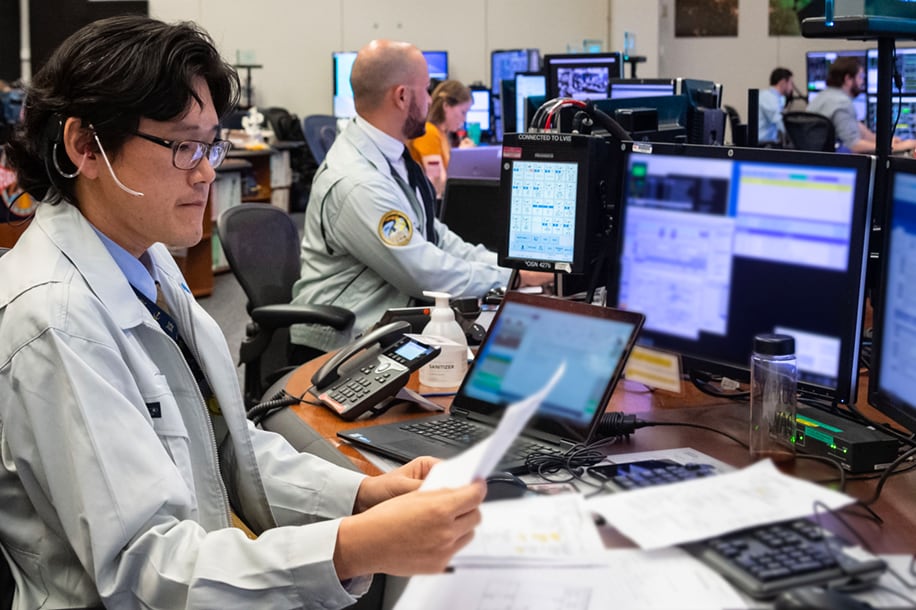
The work of an astronaut is risky, so it's not low stress. Even so, there's value in it, and it's very worthwhile. However, it's essential to incorporate ways of relaxing into your daily life. I incorporate exercise into my routine, doing jogging and weightlifting every day. I also love baseball and play often, whenever I can. In training for long missions aboard the ISS, we frequently travel to countries all over the world, and it's not unusual to commence long periods of training immediately after traveling. So it's essential to minimize jet lag. Outdoor sports under the sun are good for that purpose. (WAKATA Kochi, astronaut)
Message from astronaut WAKATA Koichi
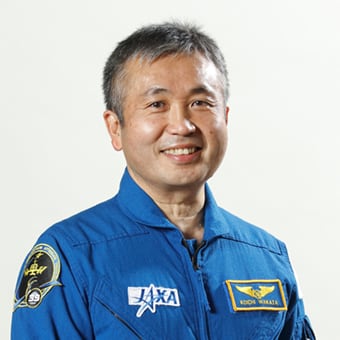
Looking ahead to the era of lunar exploration, JAXA will be recruiting new astronauts this fall. The ability to exercise calm and precise judgement and actions in extreme environments as well as team work and leadership for safety and mission success, respect for diversity as a representative of Japan in a multinational team, and the willingness to share the excitement of space exploration with people around the world—these are some of the essential qualities we are looking for. Passion for space flight, having clear goals, and making small daily efforts to learn and acquire new skills will surely pave the way to space. I am looking forward to meeting many passionate applicants in the new astronaut selection.
WAKATA Koichi
Astronaut/JAXA Special Advisor to the Director General
Unless specified otherwise, rights to all images belong to ©JAXA




